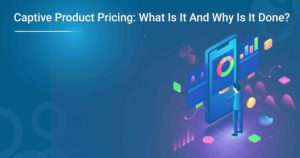Just like any other business process, a product has a lifecycle too. Whether a TV series or a software application, we only know when a product launches and wraps us from the market. But a lot goes behind the curtains that we are unaware of.
A product lifecycle is a series of stages a product goes through from its introduction to its retirement. The product lifecycle has four phases: introduction, growth, maturity, and decline. Each stage has different characteristics that affect how a company should manage and market a product.
In this blog post, we will be acquainting you with different stages of the product lifecycle and give examples of each step. We will also explain the meaning of product lifecycle management that will inspire you to kickstart a career in product management.
Defining Product Lifecycle Meaning
The product lifecycle is the natural progression of a product from its initial conception to its eventual decline and discontinuation. The cycle breaks down into four distinct stages. Let’s discuss them in detail:
- Introduction: This is the stage where the product is first introduced into the market. Companies typically invest heavily in marketing and promotion during this phase in order to generate buzz and awareness for the product.
- Growth: Once the product has been introduced and has started to gain traction, it enters the growth stage. This is when sales begin to ramp up, and the product becomes more profitable.
- Maturity: After the growth stage, the product will enter a period of maturity where sales begin to level off. Companies typically focus on maintaining and improving the product during this phase in order to keep it relevant in the market.
- Decline: Eventually, all products will reach a point where sales begin to decline, and the product becomes less profitable. At this stage, companies must decide whether to continue investing in its development or discontinue it altogether.
Product lifecycle management is pivotal for any organisation that manufactures or sells physical products. By understanding the product lifecycle stages, companies can better manage their resources and make informed decisions about when to invest in new products.
Discussing Four Stages of Product Lifecycle
As discussed earlier, there are four distinctive product lifecycle stages that a product goes through in its lifecycle. Let’s consider each stage in detail to understand its significance better.
Introduction Stage
The introduction is the stage where the product is launched in the market. The objective of launching a product during this stage is to create awareness about it and generate sales. Various marketing strategies are employed, such as advertising, personal selling, public relations, etc.
The company also tries to build a reliable customer base during this stage. Product managers have to scrutinise how the target audience will accept the product and what needs to be done to ensure it is successful. The focus during this stage is on creating a strong product identity.
Also Read: What Is Product Planning And How Is It Done?
Benefits of Introduction Stage:
- It helps create awareness about the product.
- Marketing strategies employed during this stage help generate sales.
- It helps build a strong customer base.
- It gives product managers insights about product traction.
Risks Associated With Introduction Stage:
- Since the objective is to generate sales, there is a lot of pressure on the company’s finances.
- There is also a risk that the target audience might not accept the product.
- If the product is unsuccessful, it might have to be taken off the market.
Growth Stage
The growth stage in the product lifecycle is characterised by an increase in sales. The demand for the product proliferates, and the company tries to capitalise on this opportunity by increasing production. During this stage, the company also focuses on differentiating the product from its competitors.
The growth stage is all about increasing the customer base and consolidating the product’s position in the market. The main purpose during this stage is to achieve a dominant market share and maximum market penetration. In order to accomplish this, various marketing strategies are adopted, such as new packaging, promotion, pricing, etc.
Benefits of the Growth Stage:
- There is an increase in sales and profits.
- The market share of the product increases.
- The brand awareness of the product also increases.
- It helps the company to establish a strong foothold in the market.
Risks Associated with the Growth Stage:
- There is a possibility of over-exploitation of resources which can lead to financial problems.
- There is a danger of losing focus on the core product.
- There is also a risk of intensifying competition.
Maturity Stage
It is the time when the product reaches its saturation stage in the market. The market growth for the product becomes stagnant. Very few new buyers and even the existing ones start switching to other products. Companies often introduce new features or redesigns at this stage in order to keep the interest alive. Some products never leave this stage – for example, aspirin has been around for over 100 years and is still going strong.
The companies now focus on generating revenue from the existing customer base by reducing costs and improving profits. The pricing is made competitive to attract more customers. The product has now become a commodity and is fighting to survive in the market. The products are currently marketed based on price rather than features. Sales promotions are used extensively to attract buyers. Products may be discontinued if they are not profitable enough or the company wants to focus on other products in its portfolio.
Benefits of the Maturity Stage:
- The company has a better understanding of the product and how customers use it.
- The product has established itself in the market and has a loyal customer base.
- The company can now focus on generating revenue from the existing customer base by reducing costs and improving profits,
Risks Associated With the Maturity Stage:
- The product is now a commodity and is fighting to survive in the market.
- The company may have to discontinue the product if it is not profitable enough or if the company wants to focus on other products in its portfolio.
- The product may become obsolete if new technologies or products enter the market and render the existing product obsolete.
Decline Stage
The decline stage in the product lifecycle is when the product is no longer selling as well as it once was. Many reasons can be responsible for this stage, such as changes in consumer tastes or new technology making the product obsolete. In this stage, companies will often cut back on advertising and promotion for the product and focus on getting rid of existing inventory. Examples of products in the decline stage include VHS tapes and landline phones.
The products in this stage are slowly phased out as their popularity decreases. In order to sustain themselves, companies introduce new versions or models of these products with hopes of regaining the lost market share. Price also plays an essential role during this stage, as companies lower the prices of their products in order to get rid of the existing inventory. This is done in order to make room for the newer version of the product that will be coming out soon.
Benefits of Decline Stage:
- Companies can focus on other products that are selling well
- Can get rid of the old inventory to make room for new products
- Lower prices can attract some customers back to the product
Risks Associated With the Decline Stage:
- The product is not selling well and is slowly being phased out
- The company is not making as much money off the product as it once was
- The product could become completely outdated if new technology or trends make it irrelevant.
Want to discover each product’s lifecycle stages in detail? Take a look at our Advanced Executive Certificate in Product Management course which teaches you everything about product management.
Product Lifecycle Examples
Widget: The product lifecycle of a widget starts with the idea phase. At this stage, the product is just an idea that has not been developed yet. Once the product is developed, it enters the market and goes through the introductory, growth, maturity, and decline phases.
Book: A book goes through a similar product life cycle as a widget. The difference is that a book has a much longer shelf life than a widget. A book can stay in the market for decades, whereas a widget will only be popular for a few years before an upgraded model replaces it.
App: An app goes through the same stages as a widget, but the life cycle is much shorter. An app will only be popular for a few months before a newer, more popular app replaces it.
Also Read: Brand Management v/s Product Management: Know Key Differences
Product Lifecycle Examples At Different Stages
Netflix (Growth Stage): Netflix is an excellent example of a product in the growth stage. It has been around since 1997 and continues to grow in popularity.
Apple iPhone (Maturity Stage): The iPhone is the best example of a product in the maturity stage. It was first released in 2007 and has seen minor changes since then.
Google Glass (Decline Stage): Google Glass is an example of a product in the decline stage. It was first released in 2013 and was discontinued in 2015.
iPod: The iPod is an example of a product that is no longer being manufactured. It was first released in 2001 and was last produced in 2014.
As you can see, each product goes through a different product life cycle. The lifecycle depends on the type of product and how often it is replaced by a newer model. Understanding the product life cycle is vital for businesses because it allows them to make decisions about when to introduce new products and when to discontinue old ones.
What Is Product Lifecycle Management?
Product lifecycle management (PLM) is the process of managing a product from its conception through to its eventual retirement. It comprises all aspects of a product’s life, including its development, production, marketing, and sales. With the PLM, a product manager can make sure that a product is brought to market promptly and successfully while also ensuring that it meets the needs of customers.
It is a strategy employed to help companies manage the technology and processes involved in taking a product from ideation to market. There is a bunch of PLM software that provides a centralised system for managing all product-related data, including design files, engineering specifications, bills of materials, and more.

There are four main stages in product lifecycle management: development, production, marketing, and sales. Each stage has its own set of challenges and opportunities. Here’s a closer look at each one:
Development: This is the stage where a product is created. It involves research and development, as well as testing and prototyping. The goal at this stage is to create a product that meets the needs of customers.
Production: This is the stage where a product is manufactured. It involves ensuring that the product meets all quality standards, as well as ensuring that it is cost-effective to produce. The goal at this stage is to make sure that the product can be produced effectively and efficiently.
Marketing: This is the stage where a product is promoted and sold. It involves creating marketing materials, as well as setting up sales channels. The goal of the marketing stage is to generate interest in the product and to sell it to customers.
Sales: This is the stage where a product is sold to customers. It involves working with customers to ensure they are satisfied with the product. The goal at this stage is to make sure that the product meets the needs of customers and that they are happy with their purchase.
Start A Career In Product Management
Product management is one of the most important and in-demand skills in today’s business world. A product manager is responsible for the development and success of a product from conception to market launch and beyond, a.k.a product lifecycle management.
Want to accelerate your product management career to full throttle? Our Advanced Executive Certificate in Product Management course will give you a prolific headstart to success.
More Information:
What Is The Product Process Matrix?
What Are The Reasons of Variations in Product? Causes & Reasons






_1668670867.jpg)





















